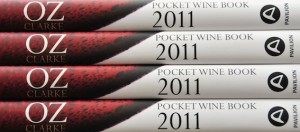
Wine is all about enjoyment, so don’t let anyone make you anxious about opening, serving, tasting and storing it. Here are some tips to help you enjoy your wine all the more:
The corkscrew
The first step in tasting any wine is to extract the cork. Look for a corkscrew with an open spiral and a comfortable handle. The Screwpull brand is far and away the best, with a high-quality open spiral. ‘Waiter’s friend’ corkscrews – the type you see used in restaurants – are good too, once you get the knack.
Corkscrews with a solid core that looks like a giant woodscrew tend to mash up delicate corks or get stuck in tough ones. And try to avoid those ‘butterfly’ corkscrews with the twin lever arms and a bottle opener on the end; they tend to leave cork crumbs floating in the wine.
Corks
Don’t be a cork snob. The only requirements for the seal on a bottle of wine are that it should be hygienic, airtight, long-lasting and removable. Real cork is environmentally friendly, but is prone to shrinkage and infection, which can taint the wine. Synthetic closures modelled on the traditional cork are common in budget wines, but the largest increase has been in the use of screwcaps, or Stelvin closures, which are now appearing on some very classy wines, especially in Australia and New Zealand, South Africa and South America.
Decanting
Transferring wine to a decanter brings it into contact with oxygen, which can open up the flavours. You don’t need to do this ages before serving and you don’t need a special decanter: a glass jug is just as good. And there’s no reason why you shouldn’t decant the wine to aerate it, then pour it back into its bottle to serve it.
Mature red wine is likely to contain sediment and needs careful handling. Stand the bottle upright for a day or two to let the sediment fall to the bottom. Open the wine carefully, and place a torch or candle beside the decanter. As you pour, stand so that you can see the light shining through the neck of the bottle. Pour the wine into the decanter in one steady motion and stop when you see the sediment reaching the neck of the bottle.
Temperature
The temperature of wine has a bearing on its flavour. Heavy reds are happy at room temperature, but the lighter the wine the cooler it should be. I’d serve Burgundy and other Pinot Noir reds at cool larder temperature. Juicy, fruity young reds, such as wines from the Loire Valley, are refreshing served lightly chilled.
Chilling white wines makes them taste fresher, but also subdues flavours, so bear this in mind if you’re splashing out on a top-quality white – don’t keep it in the fridge too long. Sparkling wines, however, must be well chilled to avoid exploding corks and fountains of foam.
For quick chilling, fill a bucket with ice and cold water, plus a few spoonfuls of salt if you’re in a real hurry. This is much more effective than ice on its own. If the wine is already cool, a vacuum-walled cooler will maintain the temperature.
The wine glass
The ideal wine glass is a fairly large tulip shape, made of fine, clear glass, with a slender stem. This shape helps to concentrate the aromas of the wine and to show off its colours and texture. For sparkling wine choose a tall, slender glass, as it helps the bubbles to last longer.
Look after your glasses carefully. Detergent residues or grease can affect the flavour of any wine and reduce the bubbliness of sparkling wine. Ideally, wash glasses in very hot water and don’t use detergent at all. Rinse glasses thoroughly and allow them to air-dry. Store wine glasses upright to avoid trapping stale odours.
Keeping opened bottles
Exposure to oxygen causes wine to deteriorate. Once opened, it will last fairly well for a couple of days if you just push the cork back in and stick the bottle in the fridge, but you can also buy a range of effective devices to help keep oxygen at bay. Vacuvin uses a rubber stopper and a vacuum pump to remove air from the bottle. Others inject inert gas into the bottle to shield the wine from the ravages of oxidation.
Laying down wine
The longer you intend to keep wine before you drink it, the more important it is to store it with care.
If you haven’t got a cellar, find a nook – under the stairs, a built-in cupboard or a disused fireplace – that is cool, relatively dark and vibration-free, in which you can store the bottles on their sides to keep the corks moist (if a cork dries out it will let air in and spoil the wine).
Wine should be kept cool – around 10–15°C/50–55°F. It is also important to avoid sudden temperature changes or extremes: a windowless garage or outhouse may be cool in summer but may freeze in winter. Exposure to light can ruin wine, but dark bottles go some way to protecting it from light.
